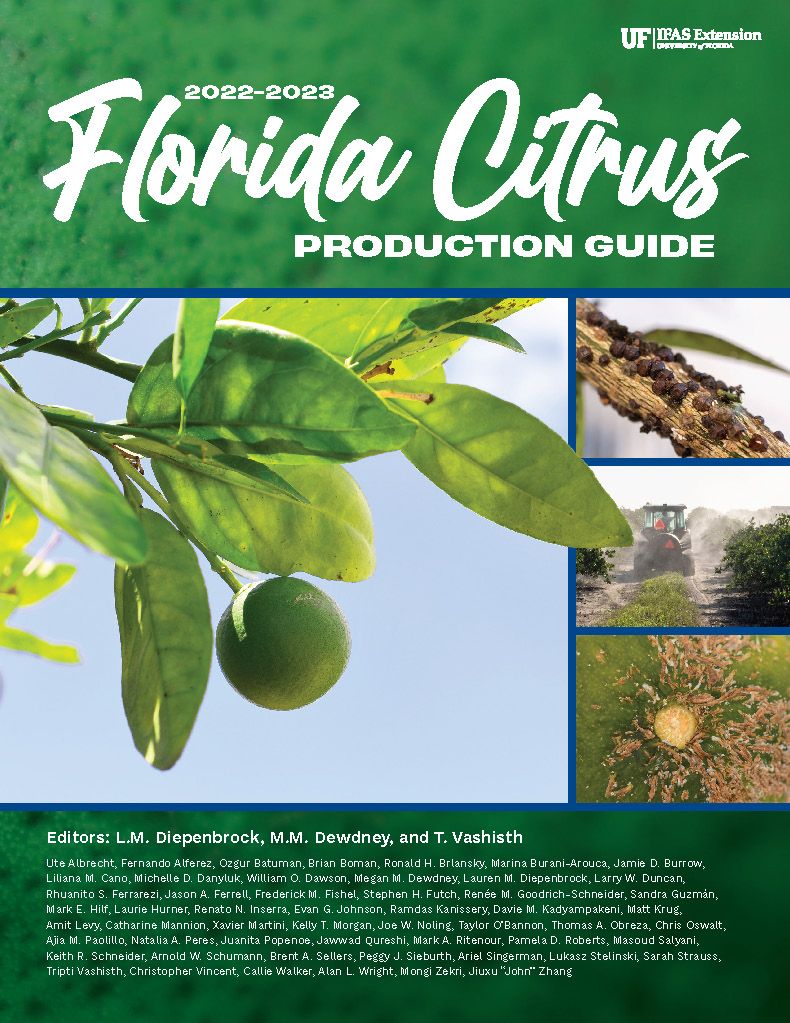2022–2023 Florida Citrus Production Guide
This is the 2022–2023 edition of the Florida Citrus Production Guide. The complete contents of this guide may be found by clicking "Download PDF" on the right sidebar, with links to each chapter in the Table of Contents below.

Credit: Tracy Bryant, UF/IFAS Communications
Table of Contents
General Information
1. Introduction
3. Fresh Fruit Pesticide Residue Limits
4. Pesticide Resistance Management
5. Pesticide Application Technology
6. Best Management Practices for Soil-Applied Agricultural Chemicals
7. Interpreting PPE Statements on Pesticide Labels
8. Quick Reference Guide to the Worker Protection Standard (WPS) as Revised in 2015
9. Food Safety Requirements and Considerations for the Florida Citrus Grower
10. Crop Insurance Policies Available to Citrus Growers
11. Useful Websites and Mobile Apps
Horticultural Practices
12. Rootstock and Scion Selection
13. Planting New Citrus Groves in Florida in the Era of Citrus Greening
14. Grove Planning and Establishment
15. Irrigation Management of Citrus Trees
16. Nutrition Management for Citrus Trees
17. Fertilizer Application Methods
22. Citrus Under Protective Screen (CUPS) Production Systems
Mites, Insects, and Nematodes
24. Citrus Leafminer
25. Rust Mites, Spider Mites, and Other Phytophagous Mites
26. Soft-Bodied Insects Attacking Foliage and Fruit
27. Plant Bugs, Chewing Insect Pests, Caribbean Fruit Fly, and Thrips
29. Nematodes
Diseases
30. Huanglongbing (Citrus Greening)
31. Citrus Canker
32. Phytophthora Foot Rot, Crown Rot, and Root Rot
34. Greasy Spot
35. Melanose
37. Citrus Scab
40. Exocortis, Cachexia, and Other Viroids
41. Blight
42. Tristeza Decline
43. Decay Control of Florida Fresh Citrus
Weeds
44. Weeds
Pesticides


